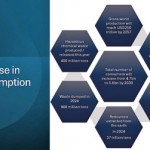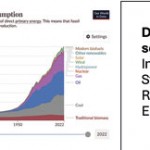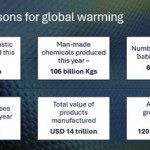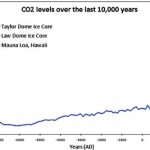Climate resilience and the future of brand marketing
View(s):Branding and marketing have always been blamed for creating wants which in return has increased consumption which is paradoxical to sustainable consumption needs. Out of the 17 goals set to be achieved under the sustainability goals, one prominent one is to achieve sustainable consumption. Sustainable consumption explains the fact that the current consumption can be continued in such a way that it will not hamper the consumption of future generations.
According to data that can be found online, to support the existing population, a planet 1.8 times larger than the current globe would be required. In just 37 minutes, contemporary humans have existed on Earth, and in the last 0.2 seconds, we have depleted one-third of the planet’s natural resources.
One-third of the planet’s resources have been consumed. A report endorsed by 1,360 scientists from 95 nations warns that human overexploitation has damaged nearly two-thirds of what is left. In 2017, more than 15,000 scientists worldwide sent out a warning to humanity, stating that numerous ecological and societal dangers are mostly caused by the world’s rapidly growing human population. This was the second warning of that kind. Regretfully, the initial one from 1992 had minimal impact.
World’s Environment Day 2024
Amidst these events, which included a heat wave in Asia, flash floods in the Middle East, and unusually high temperatures in May and June 2024 in Sri Lanka, we commemorated World Environment Day 2024 on June 5. These are merely indications. The true underlying causes of issues are not thoroughly investigated. Based only on the symptoms, everyone is attempting to treat. Planting trees, switching to renewable energy sources, using biodegradable packaging, etc. are all related to the symptoms. From where does it all originate?
There is a sudden atmospheric CO2. Where does it all come from?
What does it all mean?
The above are a few of the distractions made by the man on the planet Earth for their survival. The reason for all these is the consumption.
Shown below is the incremental energy consumption in the world over the last century. It’s synonymous with the increase in global temperature.
The climate is approaching critical tipping points that could set off a process of self-reinforcing, runaway global warming. At the same time, global energy use will continue to grow – by about 27 percent between 2017 and 2040. If nothing changes, most of this increase will be covered by burning more coal.
The energy is used to produce many things for human consumption. Now let’s look at human consumption figures.
Once produced, to sell more, (As selling more and consuming more are considered as the signs of economic growth) producers make use of more and more advertising. The figures shown above give a snapshot of all spending on consumption and advertising around the globe.
Many ads are also designed to glorify the joys of shopping, promoting the idea that buying things is a pleasurable activity. The most effective part of advertising is not information, but “suggestions” addressed to our subconscious mind. The aim is to make us associate a product with emotions and wants such as sex, happiness, health, appearance, self-esteem, belonging, social status, and identity. Advertising relies heavily on psychological theories and approaches to achieve this goal. If all ads and brand exposure is counted, we are exposed to as much as 20,000 per day. But that includes every time you pass by a label in a grocery store. The global spending on advertising is around $674 billion every year. About $75 for every man, woman, and child on the planet or the same as the GDP of Argentina. North America is the biggest spender on advertising ($212 billion) followed by Asia Pacific ($186 billion) and Western Europe ($100 billion).
Wonder why a marketer brings the issue up?
Anyone who would go through this article up to this point would wonder why a marketer is going against marketing and branding. Well, because there is no time left. We are already late. We need to do this for our kids. According to the American ecologist, geographer, biologist, and anthropologist, Professor Jared Diamond, humanity has one generation to save the world from collapse. We are approaching a tipping point beyond which it will be too late to save us. The growing world population is a threat… to the world population. Mr Diamond is predicting the tipping point around no later than 2050 – and maybe even sooner – beyond which it will be too late to save humanity from itself. Mr Diamond gives us a 50 percent chance of success. Or 51 percent. He likes to be an optimist. By 2050, the total weight of the fish in the sea be equal to the total waste in the sea. In another 75 years, all the rainforests will vanish. The planet is reaching the end of its lifespan. We need to work fast on this. What can be done?
HitAd.lk is the best and biggest mobile phone market in Sri Lanka, and we guarantee you will find what you need here from our extensive listing of mobile phones for sale in Sri Lanka. Whether it’s a budget-priced smartphone for communication, or higher end features with advanced connectivity, there are many different options from which to choose from on our site!







